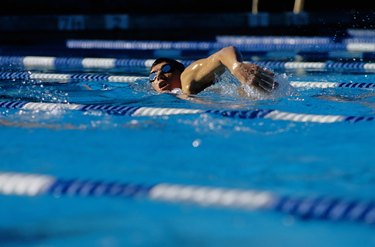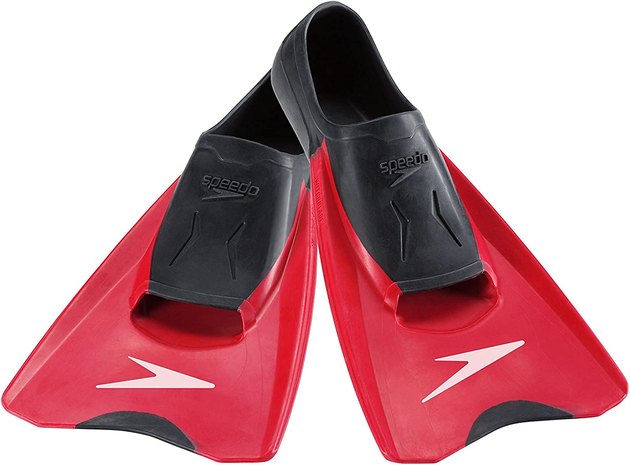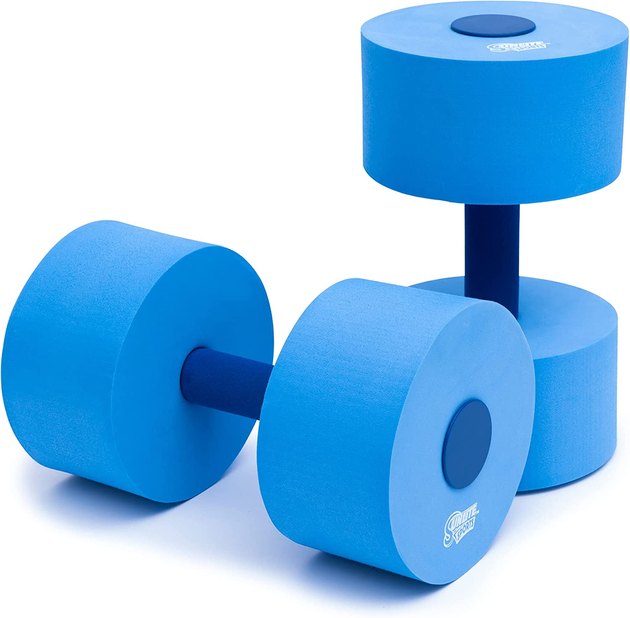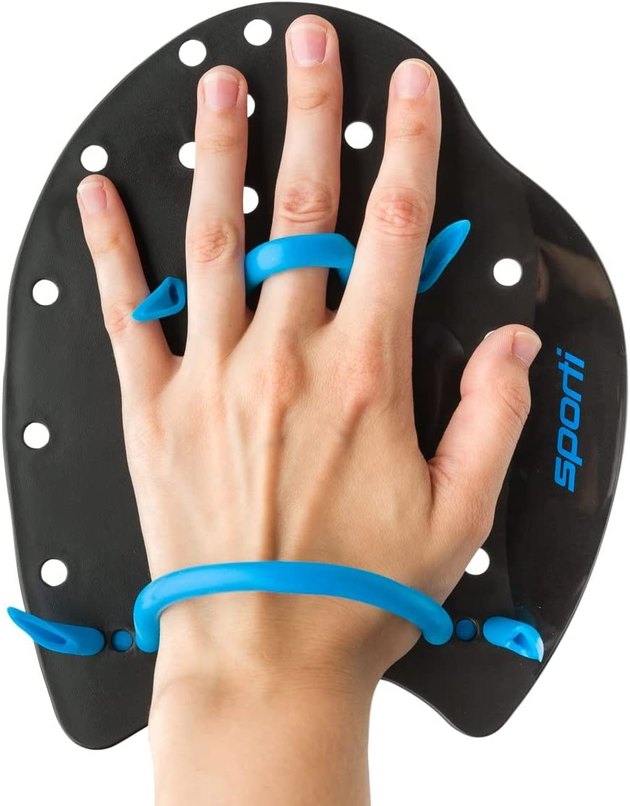
Looking for the perfect stroke or swimming exercise to burn belly fat? Well, you're in the right place — kind of.
Unfortunately, you can't spot reduce body fat, so there's no one workout or exercise modality that can stimulate fat loss in just your midsection. But you can tailor your swimming exercises and workouts to promote more fat loss.
Video of the Day
Video of the Day
Can Swimming Exercises Burn Belly Fat?
It can't be said enough: You can't spot reduce fat off your body. So while a leaner midsection may be your goal, swimming won't necessarily burn belly fat, specifically. But you can use swimming and swimming exercises to shed overall body fat, including your stomach.
There's no one best swimming exercise for shedding fat — any kind of swimming can help improve your overall body composition (your body's ratio of muscle to fat). But choosing a more challenging stroke or tailoring your swim workouts (more on that below) can help focus training for body composition.
3 Tips for Swimming to Burn Fat
1. Pick a Challenging Stroke
There are four main swim strokes: butterfly, breaststroke, freestyle and backstroke. All of them burn substantial calories. The butterfly is great for experienced swimmers and burns about 450 calories after just 30 minutes, according to Swimming.org. But if you're a beginner, the butterfly may be a bit too challenging.
The key to shedding fat involves burning more calories than you're consuming. With that said, you still want to choose a stroke that's appropriate for your experience. Check the chart below to get an idea of how many calories each stroke burns.
Calories Burned Per Stroke After 30 Minutes
Breaststroke | Backstroke | Freestyle | Butterfly |
|---|---|---|---|
200 calories | 250 calories | 300 calories | 450 calories |
2. Add Intervals
As with exercise in the gym, adding intervals to your swim workout may be beneficial. High-intensity interval training involves raising your heart rate for short periods and can help improve your overall body composition, according to the American Council on Exercise (ACE).
So, instead of completing each swim workout at a consistent pace, add short bursts of quicker laps or more challenging strokes. You can do this either timed or by distance, giving yourself a brief recovery period between intervals.
Competitive swimmers often use interval training to help them get faster.
3. Use Swim Tools
Increasing your body's total muscle mass can help improve your overall metabolic rate (how many calories your body burns at rest), according to the Mayo Clinic. But in order to build muscle, you need some form of resistance (like weights).
Although swimming is usually classified as cardio, it's actually a strength workout, too. Moving through water is more challenging, so swimming has resistance built right in.
However, for experienced swimmers who are more efficient at moving through the water, the resistance of the water may not be enough to stimulate muscle growth. Using webbed swim gloves, paddles or fins, though, can add extra resistance to your workout, increasing your overall fat burn.
You can also add swim exercises with foam water dumbbells for some extra resistance.



